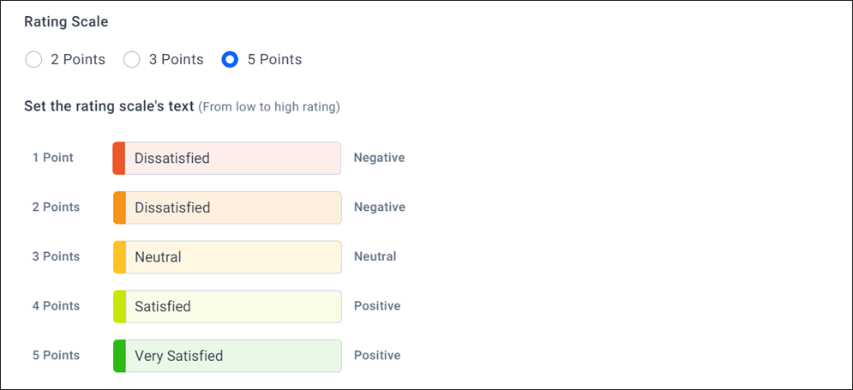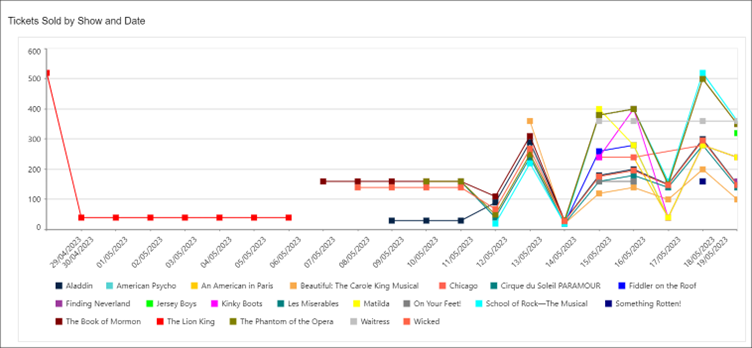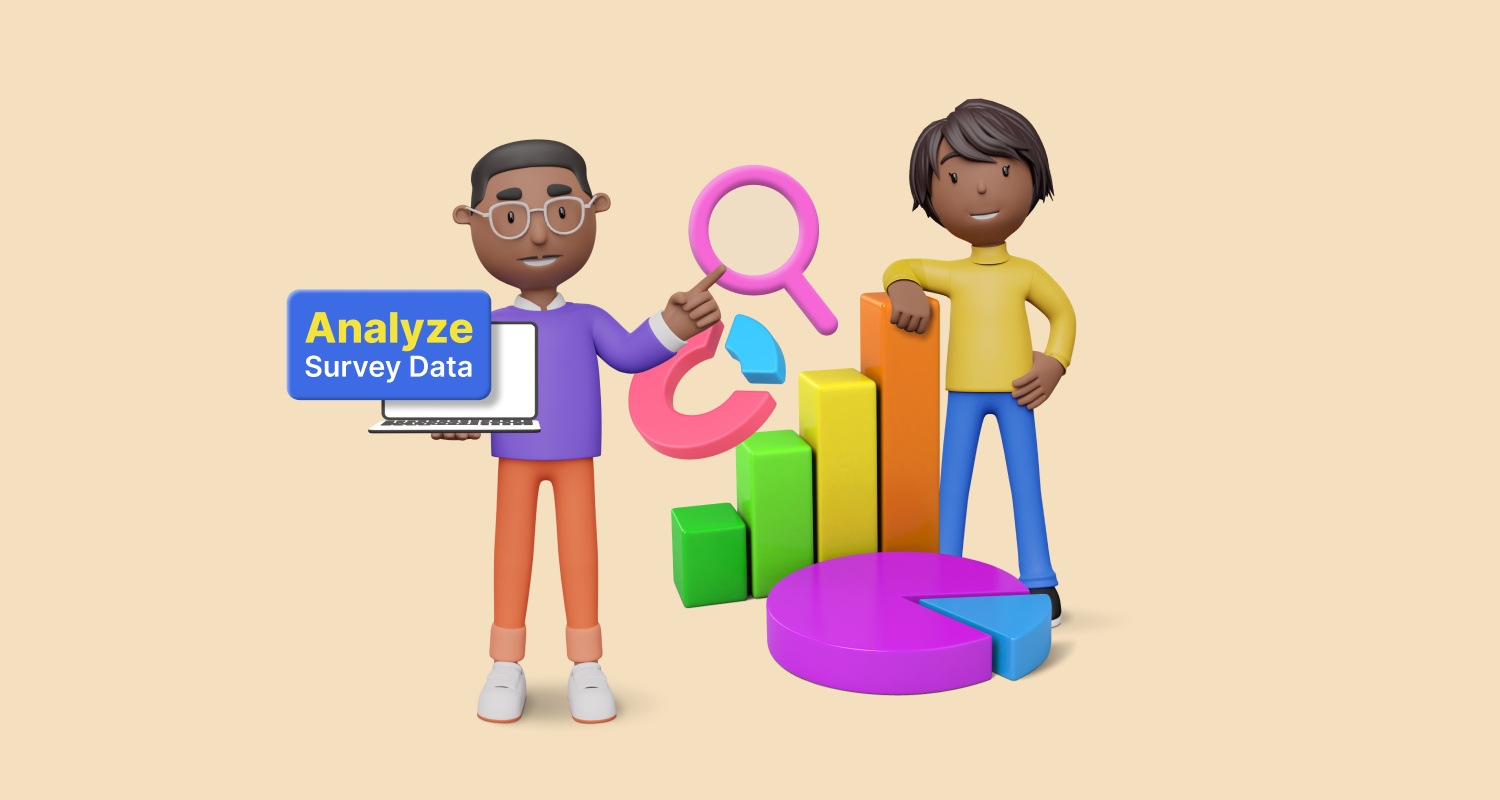Analyzing survey data is key. However, how to analyze survey data is crucial to gaining valuable insight into your business.
The analysis helps you make well-informed decisions across diverse fields, including market research, customer service, agent relations, and customer satisfaction.
In current marketing practices, customer survey results are a major and effective means of collecting data for directing profitable business transformations.
For instance, through effective survey data analysis, organizations can uncover patterns, trends, and correlations within the survey reports, leading to actionable information that can be used to improve business practices and outcomes.
Let’s learn more about survey analysis by looking at the best ways on how to analyse survey data and covering some key techniques and strategies for effective analysis.
What is data analysis?
Data analysis is the process of inspecting data to find valuable information that can be used to inform decisions and test ideas.
Applied to customer surveys, data analysis can be used to find methods for streamlining purchasing processes, identify support obstacles, improve customer relationships, and increase customer retention.
A recent report published by Product board found that approximately 52% of businesses improve their brands based on customer feedback.

Strategies of how to analyze survey data effectively
In contemporary customer survey result analysis, it is crucial to wield a variety of techniques to investigate survey reports that have already been collected.
The following items are essential to effectively analyzing survey data:
1. Know and understand all measurement levels
Survey data analysis can be classified into different measurement levels, each serving a unique role survey reports. Familiarize yourself with the following levels:
- Nominal: Data is classified into distinct groups or categories based on specific characteristics with no inherent order or value.
- Ordinal: Data is categorized into distinct groups based on specific characteristics with an integral order or ranking, but the intervals between categories are not equal.
An example of ordinal data is customer satisfaction (CSAT) survey responses that use a Likert scale. (In this context, a Likert scale quantitatively analyzes a customer’s attitude, behavior, or opinions on their experience with the business).

- Interval: This level of data combines features of nominal and ordinal. It has equal intervals between values, without a true zero point, and quantifiable differences between data points. This means that the numerical difference between any two values is meaningful and can be used for comparison and analysis.
- Ratio: This level exhibits equal intervals between values, along with a meaningful zero point.

2. Ensure the customer survey data is high-quality
When performing analysis, consider factors that may affect the survey data, such as the phrasing of the questions, the objectives of the survey, respondent attitude, and the information you intend to use.
Surveys should use clear, concise, and unbiased questions to acquire accurate responses.
3. Differentiate between closed- and open-ended questions
Survey reports questions can be differentiated as follows:
Closed-ended questions
Closed-ended questions are questions that offer predefined response options, such as multiple-choice or yes/no formats. Such questions facilitate quantitative analysis and simplify data processing.
Open-ended questions
These questions give respondents room to provide unrestricted answers in their own words.
Importantly, the answers to such questions provide qualitative data and offer valuable insights into participants’ thoughts, feelings, and opinions, giving companies direct information that can be leveraged to improve their business.
4. Analyze quantitative data first
Quantitative data involves numerical information, providing statistical precision and allowing companies to begin analysis much faster.
There are two types of quantitative data:
- Discrete: This type of data has a fixed value. One example is the number of product licenses held by a customer.
- Continuous: This type of data varies over time. The value isn’t static. One example is the number of support tickets opened by a specific customer over the course of a week.
By analyzing such data, you can better deliver objective analysis.
5. Supplement analysis with qualitative data
Qualitative data adds depth and context to quantitative findings by capturing the complexities of customer experiences. Qualitative data in customer surveys is mostly collected through interviews, observations, and open-ended questions.
6. Identify relationships with cross-tabulation
Cross-tabulation is a method of examining relationships between two or more variables. It helps you merge data in a very compact and understandable manner.

The following factors should be included in any cross-tabulation analysis of customer survey data:
- Demographics: Collect precise information on the different demographic groups that responded to survey questions
- Gender: Analyze how responses vary based on gender
- Average: Calculate averages or means for specific variables within different demographic groups
7. Use time-series analysis
While analyzing survey data, you need to be able to compare your past data with current data.
This will help you easily discover related data, better predict business growth, and detect gaps or inconsistencies in the survey data, the surveys themselves, or the customer service provided.
8. Analyze missing data
Employ appropriate techniques to handle missing values, such as imputation (the substitution of missing values for reasonably estimated values) or deletion.
By doing so, you’ll still have the data necessary to perform productive, effective, and useful analysis.
9. Differentiate between correlation and causation
The human mind likes to identify patterns. This tendency often leads to associating two unrelated events that occur independently of each other.
Therefore, it is crucial to thoroughly examine and differentiate between all correlation and causation aspects of every analytical finding. Consider all relevant variables before drawing any conclusions.
How to present survey results
To ensure your analysis has maximum impact, it’s important to employ strategies that enhance its visibility and cater to the needs and preferences of your audience.
Let’s explore the best ways to do so.
1. Use high-quality data visualizations
To ensure your analyzed data is visually appealing and easily understandable, employ the following techniques:
- Choose appropriate charts and graphs: Select chart types and KPI visualizers that enhance clarity, emphasize key insights, and effectively represent your data

- Simplify complex data: Break down complex information into smaller, digestible visual elements
- Use clear and legible fonts: Choose easy-to-read fonts, particularly when presenting data on slides or in reports
2. Put analyzed data at the forefront
To effectively present survey reports, make it the focal point of your communication. Consider the following approaches:
- Summarize key findings: This allows your audience to grasp the main points up front
- Tell a compelling story: Connect data points to a broader context or objective to make it engaging
- Provide context and interpretation: Offer insights, observations, and expert interpretations to help your audience understand the meaning behind the numbers
3. Present survey reports effectively
To ensure clarity and avoid confusion, present each type of survey results separately.
- Use multiple slides or sections: When presenting data in a slide deck or report, dedicate separate slides or sections to different types of customer survey data analysis.
- Organize data logically: Group related data together and provide clear headings and subheadings to guide your audience.

4. Label your data components clearly
To facilitate understanding and prevent misinterpretation, effective labelling of data components is crucial.
- Provide clear titles and captions: Use descriptive titles and captions to provide additional context or explanations for the data.
- Clearly label axes and units of measurement: This helps your audience easily understand the scale and context of the data being presented.

- Include data source information: Provide information about the source of the data and any relevant disclaimers to maintain transparency and credibility.
5. Shape your analysis report to your audience’s satisfaction
To effectively engage your audience, you should consider their needs and preferences. Practice the following:
- Tailor the presentation to the audience: Understand your audience and summarize the detailed data so that the audience will engage with it. This means excluding irrelevant or inessential analysis.
- Proactively address specific concerns or questions: This demonstrates your expertise and helps build trust in the analysis.
- Actively seek feedback before and after delivering analysis: Utilize colleague and audience input to refine your presentation style and improve future data presentations.
Turn survey data into meaningful business insights
Now that you know the keyways on how to analyse survey data and presenting your finding, try using BoldDesk—powerful, customizable help desk software—to help you collect, analyze, and present your business’s data through built-in reports and analytics.
BoldDesk will also help you increase your customer service agents’ productivity and effectiveness.
To learn more about how your customer service can excel with the aid of BoldDesk, sign up for a free trial. Or you can schedule a live demo and experience BoldDesk firsthand alongside our product experts. You can also reach out to our support team if you have any questions.
Related articles



 Email Ticketing System
Email Ticketing System




